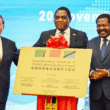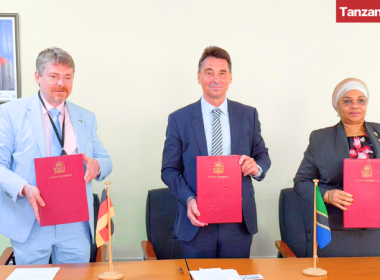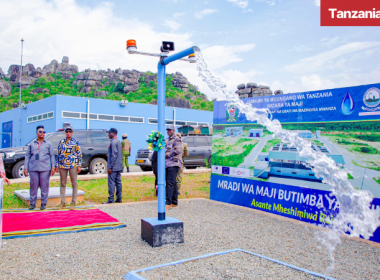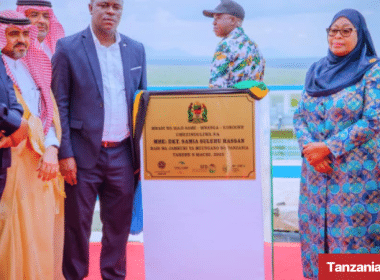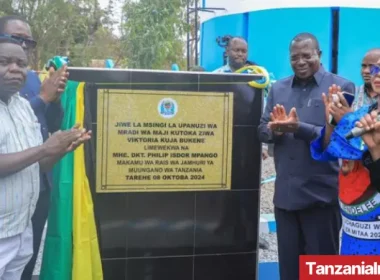Water
Tanzania’s water resources are numerous and diverse with an average of 96.27 km3 of renewable water resources per year which corresponds to 2,266 m3 per person per year.
Water Resources in Tanzania are made of rivers, lakes, wetlands, and aquifers. Many of its largest water bodies are shared with neighboring countries and the subtropical climate results in high temporal variability in rainfall and river flow.
Tanzania is divided into nine river basins: Pangani, Wami-Ruvu, Rufiji, Ruvuma, Lake Nyasa, Internal Drainage Basin, Lakes Rukwa, Lake Tanganyika, and Lake Victoria, and shares eleven international lakes and rivers with other nations including the three East African Great Lakes of Victoria, Tanganyika, and Nyasa.
Tanzania’s water resources are in abundance but are rapidly declining. While Tanzania currently has a much higher per capita renewable water resources endowment compared to neighboring countries, projections indicate that this position may not hold due to increasing urbanization and population growth.
Despite its numerous water bodies, Tanzania faces water shortages in many areas: the distribution of water availability and population is uneven across the country and presents considerable water resource management challenges.
The general trend is that river flows and lake levels are declining. This is reported to be caused by a range of both natural and manmade factors such as declining rainfalls, unsustainable water uses such as operational rules at hydropower plants, over-abstraction of rivers, and unsustainable agricultural expansion.
Tanzania must meet and balance the increasing water demands from a broad range of pressures: a growing population, with water needed for food security, economic growth, and energy production.
Tanzania Water Sector Development Program
The Government of Tanzania (GoT), in collaboration with Development Partners (DPs), has been implementing the Water Sector Development Programme (WSDP 2006- 2025) since 2006 which follows a sector-wide approach of twenty years of implementation.
The Program focuses on prioritized water resources management and service delivery in the water and sanitation sector.
The Ministry of Water of Tanzanua is the implementing institution on behalf of the Government.
Tanzania Water Sector Management
The Tanzanian water sector is divided into two sub-sectors: water resources and sanitation.
The provision of water supply and sanitation services is carried out by the Water Supply and Sanitation Authorities (WSSAs) which are responsible for the management of water supply and sanitation services mostly in urban areas.
The Community Owned Water Supply Organisations (COWSOs) are responsible for the management of water supply and sanitation services in rural areas.
WSSAs are regulated by the Energy and Water Utilities Regulatory Authority (EWURA), while COWSOs are regulated by the Ministry of Water.
The Dar es Salaam Water and Sewerage Authority (DAWASA) and the Dar es Salaam Water and Sewerage Corporation (DAWASCO) are responsible for the provision of water supply services in Dar es Salaam city and neighboring areas of Kibaha and Bagamoyo.
DAWASA is the asset owner while DAWASCO is the operator for water supply services.
Regional and District WSSAs are responsible for the provision of water services in the Regional and District Headquarters, respectively, while Small Towns WSSAs serve the designated small towns.
On the other hand, National Projects Water Supply and Sanitation Authorities are the big water schemes that cover more than one Local Government Authority and serve both urban and rural settlements.
Tanzania Water Supply
About 60% of Tanzania’s population is estimated to have access to an improved water source. Most of the unmet need is located in small towns and rural communities where broken infrastructure, unmetered water points, and water rationing is commonplace.
Tanzania Water Quality
During 2013/14, water quality test results reported by regional WSSAs through the MajIs Water Utilities Information Syste showed that compliance to E-Coli standards was 84% while compliance with residual chlorine requirements was 86%.
For DAWASCO, compliance with E-Coli requirements was 73% while compliance with residual chlorine requirements was 82%.
Tanzania Wastewater Quality
A total of 10 out of the 23 regional WSSAs have sewerage systems. Data reported by these regional WSSAs reveal that compliance with Biochemical Oxygen Demand (BOD5) and Chemical Oxygen Demand (COD) requirements is 72% and 71%, respectively.
Wastewater effluent from the infrastructure operated by DAWASCO does not comply with BOD5 and COD standards.
DAWASCO’s non-compliance is mainly due to poor conditions and inadequate capacity of the wastewater treatment plants.
Tanzania Sanitation
It is estimated that about 93% of Tanzanians have access to some form of latrine, but only 3% have a flush toilet.
Sources: Food and Agriculture Organization of the United Nations, Tanzania Ministry of Water, USAID, World Bank (WB).
Last Update: 22nd June 2022



